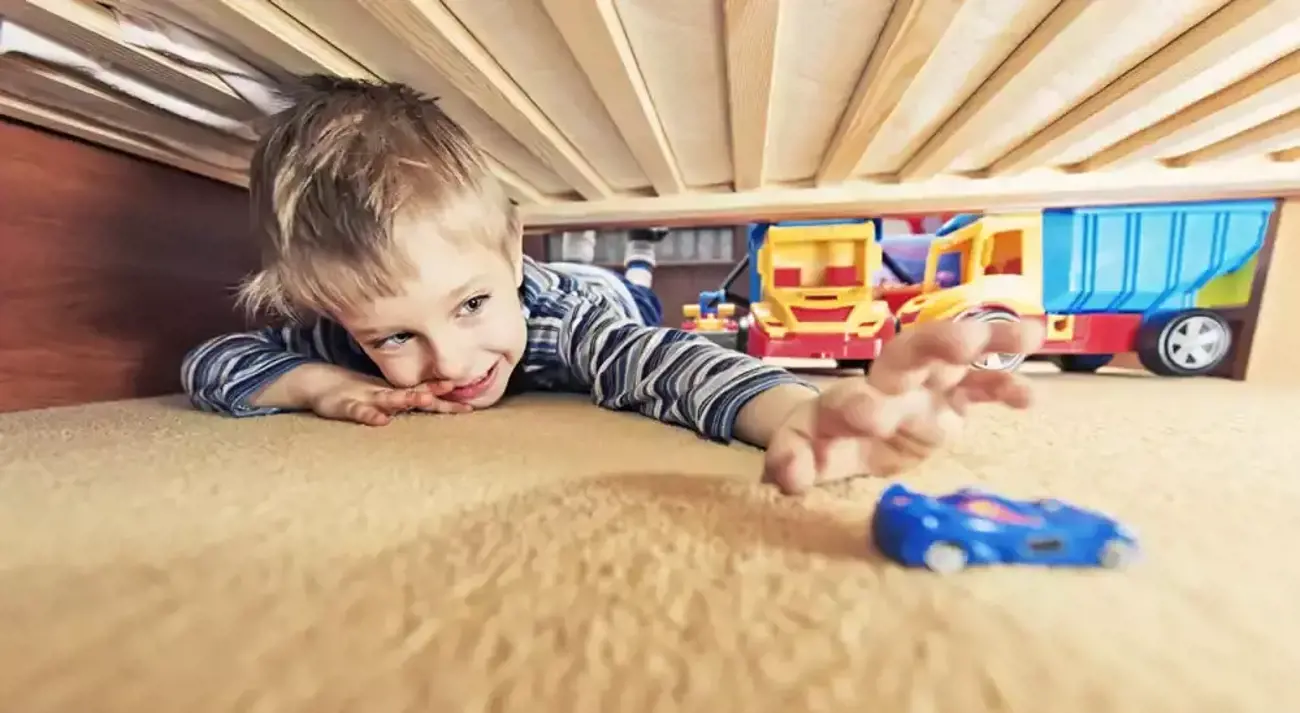Earlier this year, searches for indoor scavenger hunt ideas quadrupled on Pinterest, and now that winter is officially here, this kind of home-based activity is a weather-proof way to get young bodies and brains moving.
Indoor scavenger hunts involve children darting around searching for certain items, and as well as being fun, they also tick a lot of boxes when it comes to early learning.
These games encourage children to think creatively, observe closely, grip a pencil, follow instructions and practice literacy, numeracy and other key skills.
There are indoor scavenger hunts to suit different ages, interests and living areas, and to help you prepare a hunt at home, we’ve tracked down some engaging ideas for under fives. Here goes!
Stage a classic hunt
Although older children will enjoy solving a long list of rhyming riddles or digging deep for the next clue, a simpler approach is needed for pre-readers and early readers. Just give them a list of things to find, (e.g. a stuffed animal, ball, spoon etc.), using pictures for toddlers and adding simple text for preschoolers.
There are lots of free printables that include bright images, sight words and checkboxes to tick off, or else you can make your own, using computer wizardry or a humble pack of pencils.
Go with a theme
Instead of looking for soft toys, soccer balls and everything else on the list, another idea is to select one kind of object to search for.
A search for coins or play jewellery makes it a real treasure hunt, and if your child has a large collection of one toy type (e.g. Matchbox cars, play food or animal figurines), these can be hidden and found.
To add a problem-solving element, your child could search for all the pieces in a wooden puzzle (slotting them in as they go). And for an arty approach, they could hunt for a whole set of crayons, then do a drawing.
Combine scavenging and storytime
Another idea is to select some board books or picture books and hide them around the place. Every time your child finds a book, they need to yell ‘Book found!’ and then join you for a reading of it.
The hunt continues until all the books have been located and shared, and if you like, you can take a photo of the book selection at the start or print off all the cover images, so your little one knows what to look for.
Colour their world happy
Rainbows brighten up the cloudiest day, and an indoor scavenger hunt is a beautiful way for your child to practice colour-recognition.
Start by giving them a list of colours to tick off in their travels (e.g. ‘find something red’, ‘find something green’ and so on), and if they master these quickly, preschoolers can then look for trickier hues, like light blue and gold.
Alternatively, Entertain Your Toddler suggests putting different-coloured paddle pop sticks or pom poms in a bag, and as your child draws each one out, they must find an item that matches the colour.
You can also host a rainbow-making scavenger hunt, where siblings find items in each colour that you call out, then work together to make a rainbow shape with them.
Practice their A, B, Cs and 1, 2, 3s
Scavenger hunts are a fun way to practice early literacy and numeracy skills, too.
For starters, you can hide foam, magnet or felt letters/numbers around the room and ask your child to match them to the ones on their list. To increase complexity, children can match uppercase letters to lowercase ones, or put single digits together to make doubles.
Once they’ve learnt their A, B, Cs, your child can then hunt for items that begin with each letter of the alphabet (e.g. A is for apple, B is for bear and X is for xylophone).
There’s also the option of hiding lots of DUPLO bricks around the place and asking your child to find a certain number of them (e.g. ‘find five bricks please’ or ‘find seven red bricks this time’).
Think outside the square
Shape-recognition can also be practised with indoor scavenger hunts.
One idea is to hide different shapes around the room (e.g. hand-drawn circles, clip art stars or cut-out hearts) and ask your child to match each shape they find to the shape on their list, or practice drawing it themselves.
Alternatively, you can give them a list of shapes and ask them to find objects that match (e.g. a rectangle-shaped front door and circle-shaped cushion).
Depending on their level, children might also like to look for a selection of 3-D shapes (e.g. sphere-shaped balls, cube-shaped blocks and cylinder-shaped cans).
Introduce riddles for cluey kids
As your child gets older, the complexity of the scavenger hunt can grow with them, and The Spruce has a list of rhyming clues that can be paired with pictures for preschoolers. For instance, ‘I have four legs, but I don't have feet. I come in handy when it's time to eat’ will direct your child to the kitchen table, where another clue will be waiting.
Of course, the fun needn’t stop there. If the weather is welcoming, then there are lots of outdoor scavenger hunts to try as well. Pinterest contains a treasure trove of ideas, and whether your child is exploring the house, backyard or neighbourhood, the good old-fashioned scavenger hunt will be a hit!
































